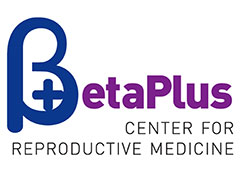Because our Clinic has moved to a new location, 2022 was very challenging. We moved during the summer holidays, but our laboratory was closed longer than it usually is on summer holidays.
Despite moving, we had only thirteen cycles less than in the previous year, that is in 2022 we have started 575 cycles. Of those 325 cycles were IVF/ICSI, two were oocyte cryopreservation, 170 were frozen embryo transfers, and 78 were inseminations.
In these procedures, there were 181 positive pregnancy tests in total, which gives a success rate of 31.5% for any cycle started in the Clinic. Women undergoing ART procedures were between 21 and 44 years old. Because the odds of having a healthy live-born baby from the cycles with their oocytes are extremely low for women above 45 years, we do not accept women above that age in the ART procedures.
IVF/ICSI
In total 325 fresh cycles were started. Before aspiration, 28 were terminated, in 9 women the reason was a positive COVID test, while the reason for other terminations was a low response to stimulation.
In women that had aspiration, embryo transfer was not performed in 58 cases. In 32 women, “freeze all” was primarily performed due to the prevention of ovarian hyperstimulation syndrome (OHSS). In eight women, there were no oocytes obtained during aspiration. Because there was no fertilization or the quality of collected oocytes was inadequate for fertilization, embryo transfer was not performed in 17 women. In one patient, we did not perform embryo transfer due to the unfavorable endometrium.
In fresh cycles, there were 238 embryo transfers in total. 13% of women had blastocyst embryo transfer (31 patients), while in other patients we transferred embryos at 2 to 4 days. In 120 cycles (50.4%) single embryo transfer was performed, in 104 (43.7%) two embryos, and three embryos were transferred in 14 cycles (5.9%). Upon transfer of three embryos, only one patient had a positive pregnancy test, but the pregnancy was unfortunately biochemical.
In total 77 pregnancies were achieved in fresh IVF/ICSI cycles, which gives a success rate of 32.4% by fresh embryo transfer. In total, three twin pregnancies were achieved, after 104 transfers of 2 embryos (2.9%).
In one patient, upon transfer of two blastocysts, we had triplet pregnancy and gave birth to three healthy children. This outcome was due to the patient’s religious beliefs, she did not want embryo cryopreservation, and we of course respected it. However, such pregnancy is very risky, hence our laboratory avoids the transfer of two blastocysts.
Of 325 cycles started for IVF/ICSI procedure, in 260 standard ovarian stimulation protocol was used (full stimulation), in 54 cycles we used mild ovarian stimulation protocol, while in 11 patients, IVF/ICSI was in the natural cycle.
There were no significant differences in the embryo transfer success for the protocol administrated. The positive pregnancy test was reported in 33% of embryo transfers after full stimulation, 30.2% after mild stimulation, and 28.6% in the natural cycle, although the number of natural cycles was small hence the results are not statistically significant.
Frozen embryo transfer (FET)
In 2022, 170 frozen embryo transfers (FET) were started. For two cycles embryo transfer was not performed because of the difficulty passing through the cervical canal, hence 168 embryo transfers were performed. Since we mostly cryopreserve embryos on day 5, in 165 FET procedures we transferred blastocyst, and day 3-4 embryos in only three FET procedures.
We are very successful in cryo embryo transfers. We had 95 pregnancies, which gives a success rate of 56.5% per transfer.
We did 80.4% of cryo embryo transfers in stimulated cycles because the risk of giving up the procedure was lower. In the natural cycle, we did 35 cryo embryo transfers. The success rate was high in stimulated (55.6%) and natural cycles (60%).
In most FET procedures we transferred one embryo (144), while in 24 cycles we transferred two. We did not have procedures for the transfer of three cryo-stored embryos.
The success rate for FET of one blastocyst was 56.5% and for two blastocyst transfers 62.5%. Upon transfer of two blastocysts, there were in total two twin pregnancies (8.3%). One twin pregnancy was reported after the transfer of one blastocyst in the natural cycle. The pregnancy resulted in fraternal twins, meaning that one of the twins was conceived naturally during the FET cycle. The patient gave birth to a boy and a girl.
Insemination (AIH)
In 2022, 77 inseminations were performed, mostly in the stimulated cycle. In the natural cycle, 10 inseminations were performed. The positive pregnancy test was achieved in 9 cycles (11.7%).
Twin pregnancies
As in previous years, we are very satisfied with the low rate of twin pregnancies. In 2022, there were seven multiple pregnancies (3.9% out of the total number of pregnancies). Four multiple pregnancies were achieved in the fresh IVF/ICSI cycle, one was with triples. Out of the three twin pregnancies after the cryo-embryo transfer, one was achieved from one embryo.
We are very grateful for choosing the BetaPlus Center as your clinic for medically assisted reproduction, and we hope that in the future we will continue to justify your trust. We are also using this opportunity to announce that the 1000th baby will soon be born at our Clinic, and we are planning to celebrate this success!
BetaPlus Center Team




